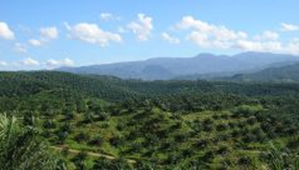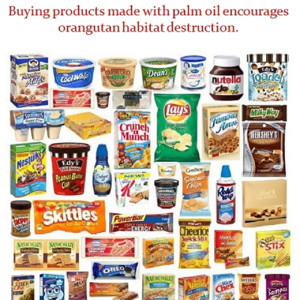Sandra’s Snippets
I wish you all health and happiness in this new year.
Have Fun with Gravity
By Judith Hanson Lasater, Yoga Journal Jan. 2019
 Having an increased awareness of the effects of gravity can help you notice which muscles to use and which to release to move deeper and safer into a pose.
Having an increased awareness of the effects of gravity can help you notice which muscles to use and which to release to move deeper and safer into a pose.
When you practice asana (yoga poses), you are constantly and experimenting or dancing with the force of gravity and its effect on a pose. The term movement literacy is based on the understanding that the body is an orchestra and movements are the music it creates.
For example; the action of raising your leg up in a standing pose like Hand-to-big-toe is created as you flex your hip joint bringing your thigh outward from your trunk. This uses the hip flexor muscle and part of the quadriceps. These muscles on the front of the body undergo a shortening contraction. This is hip flexion which is occurring against the force of gravity.
Speedy Vegetable Chili
Warm up this winter with a quick and healthy meal that you can make ahead of time.
Recipe from Uncomplicated: Taking the Stress Out of Home Cooking by Claire Tansley
Heat 2 Tbsp canola oil in a large pot over medium heat. Add 1 chopped yellow onion and ½ tsp salt; cook, stirring occasionally, until softened and slightly golden, about 4 minutes or until starting to soften and lightly golden. Add 1 chopped carrot and 1 chopped celery stalk. Stir in chopped red bell pepper, 1 chopped minutes zucchini and 3 minced garlic cloves; cook 1 minute. Stir in 4 tsp chili powder and 1 tsp cumin; cook 30 seconds. Add 1 28 oz can whole tomatoes slightly chopped with juices. Add 1 5.5 oz can of tomato paste and bring to a boil. Reduce heat and simmer, stirring occasionally until zucchini and peppers are just tender, about 10 minutes. Stir in 1 can kidney beans, drained and rinsed; 1 cup frozen or canned corn; ½ cup dry white wine and ¼ cup chopped parsley. Simmer another 5 minutes. Serve with sliced avocado. Serves 4
Let’s Help Save the Rainforests
 A single ingredient contained in many of your favorite foods palm oil is wiping out rainforests all around the world, from Palawan, Philippines to the Brazilian Amazon? Palm oil is killing endangered species (orangutans being the most famous example) and destroying the livelihood of indigenous tribes?
A single ingredient contained in many of your favorite foods palm oil is wiping out rainforests all around the world, from Palawan, Philippines to the Brazilian Amazon? Palm oil is killing endangered species (orangutans being the most famous example) and destroying the livelihood of indigenous tribes?
Read below to help you understand why palm oil production is so destructive and illustrate some of the myriad products with palm oil we, as consumers, should try our best to avoid.
Fires in Indonesia: How Palm Oil is Killing Orangutans
Palm oil is one of the most profitable crops and grows well in hot, humid climates. Slash and burn agriculture is the quickest way to clear the land, appealing to corporations and impoverished small-scale farmers alike.
An estimated 3.5 million hectares of rainforest in Indonesia, Malaysia, and Papua New Guinea have already been lost to make way for palm oil plantations.
 The rainforest floor contains peat and other organic materials, so it often keeps burning after the fires have been extinguished. In 2015 the result was a toxic cloud that enveloped most of Southeast Asia for nearly two months, affecting the lives of millions and killing 10 people in Indonesia.
The rainforest floor contains peat and other organic materials, so it often keeps burning after the fires have been extinguished. In 2015 the result was a toxic cloud that enveloped most of Southeast Asia for nearly two months, affecting the lives of millions and killing 10 people in Indonesia.
The long-term health effects and impact on global warming are predicted to be severe. For some reason the world remains largely silent about this catastrophe. Palm oil interests run deep, and major corporations have done little or nothing to halt the environmental destruction.
The Roundtable for Sustainable Palm Oil was established in 2004 with the aim of promoting “certified sustainable” palm oil. Unfortunately, this initiative was too little, too late, with lax membership criteria and only two members thrown out for non-compliance to date.
 Suppliers (many of which are small-scale farmers) are often not checked thoroughly. Corners have been cut in order to show that memberships are on the increase. Sadly, it seems like the RSPO is doing little more than adding greenwashed buzzwords to a product that is the opposite of “sustainable.”
Suppliers (many of which are small-scale farmers) are often not checked thoroughly. Corners have been cut in order to show that memberships are on the increase. Sadly, it seems like the RSPO is doing little more than adding greenwashed buzzwords to a product that is the opposite of “sustainable.”
HOW TO FIGURE OUT WHICH PRODUCTS CONTAIN PALM OIL
It would be great to avoid buying products with palm oil in them. Unfortunately, while the EU made Palm Oil labeling compulsory in December 2014, labeling elsewhere may be deceptive. The problem is that Palm Oil hides behind myriad different names.
Some of them contain “Palm,” including octyl palmitate, palmytil alcohol, palm kernel, Palm kernel oil, Palm fruit oil, Palm stearine, and many others.
If you see the word Palm in any form, it’s best to avoid it. Other known Palm Oil pseudonyms include cetyl alcohol, emulsifiers, glyceryl stearate, lauryl sulphate, sodium kernelate and stearic acid (see full list in image above).
The biggest problem is that Palm Oil is often listed as “Vegetable Oil,” deceptively appealing to vegetarians and other health-conscious types.
Processed Palm Oil is actually very high in saturated fats and calories. Not only that, but Palm Oil contains a certain degree of organ toxicity, could increase the risk of heart disease, and it is linked to insulin resistance and obesity.
In the United States, “Vegetable Oil” is a generic term also used to describe oils that are far less detrimental (both to the environment and to people’s health), including coconut, sunflower and olive oil. Makes the EU’s compulsory labeling law seem like a smart idea, doesn’t it?
50% of all packaged products contain palm oil.
 It has been estimated that over half of the products in your local supermarket include Palm oil. Snacks, cookies, candy bars and potato chips are common examples.
It has been estimated that over half of the products in your local supermarket include Palm oil. Snacks, cookies, candy bars and potato chips are common examples.
But Palm Oil is also found in beauty products such as lipsticks, shampoo and soap. It’s found in several brands of packaged bread, because it allows loaves to remain soft on supermarket shelves for longer.
It’s found in instant noodles, packaged ice cream, chocolate, detergents, industrial pizza dough and margarine… basically just about every processed, packaged product that most of us use daily. Here’s a brief list of the many brands and products with palm oil:
|
|
You’ll note that many of these products are unhealthy anyway, as most types of junk food and candy contain Palm Oil. Eliminating these products from our diets will not only benefit the environment in the long term, but also our health.
So how can we avoid products with Palm Oil altogether? It starts with taking time to study the labels and try to stop buying the aforementioned products.
We’re not suggesting you should go cold turkey on ALL your favorite snacks. But if each of us consumed just half as much Palm Oil as we do now, the agricultural industry would get the message loud and clear.
Start by gradually replacing store-bought snacks with homemade. When that’s not possible (we’re not suggesting you should start making all your own lipsticks and detergents!), shop at organic stores. Just make sure you ask them for an ingredient list: Something labeled “vegan” or “organic” might still contain Palm Oil or its derivates.
Share this article with your friends and help spread the word about the environmental consequences of Palm Oil. The rainforest and its inhabitants will thank you! –Margherita Ragg a freelance writer and English teacher from Milan, Italy



